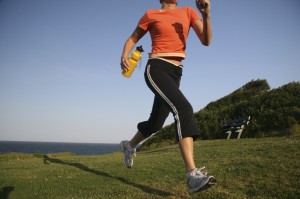So, I recently blogged on platelet rich plasma (PRP). I wanted to provide you with the latest up to date info on this procedure in regard to chronic tendinitis. Many people suffer from lateral epicondylitis (tennis elbow). This is a condition that affects the extensor tendons in the elbow. Most experts link tendon injuries to hypovascularity (not enough blood flow) and repetitive micro-trauma thereby resulting in localized weakness and degeneration over time.

This may lead to eventual rupture but no one can predict that for sure. Using PRP would hypothetically reverse the effects of chronic tendinopathy while stimulating healing at a microscopic level by initiating revascularization. The info and data for this post was in large part taken from the American Journal of Sports Medicine (Nov. 09).
It is important to keep in mind if you are dealing with tennis elbow to understand the difference between acute injury and chronic pain. Physiologically, healing enters the chronic phase in 22 days post injury. However, from a clinical perspective, a physician may not consider elbow tendinitis chronic until after 3 months or more in some cases. While PRP has shown positive results in several small case studies, the abundance of solid research is still lacking or too small to draw finite conclusions as to its efficacy.
With that said, let me share some data for people who were treated for tennis elbow with PRP:
- Mishra & Pavelko treated 20 patients out of a sample of 140 with elbow pain who met their inclusion criteria. Of those 20, 15 were given PRP and 5 served as controls receiving only local anesthetic injections. The PRP group noted a 60% improvement at 8 weeks, 81% at 6 months and 93% at the final follow-up (range b/w 12 and 38 months). However, 3 of the 5 controls withdrew from the study early to seek other treatment which means the data can only be drawn from the PRP group. Although flawed with a small group and attrition in the control group, this study was prospective and did include a control group.
What does this mean? Well, if you have ever suffered from lateral epicondylitis or worked with those that have, you know how difficult this condition can be to resolve. I know several people that opted for surgery to end the pain. Conservative treatment often consists of ice, rest, stretching. strengthening and cross fiber massage. Some use a Band-it brace and acupuncture as well. In the end, it can be down right debilitating.
PRP may provide a better answer, but more research and larger trials are needed to confirm the overall efficacy of it. If you are a chronic sufferer though, you may want to seek out an orthopedist who is proficient in this and take a look. Aside from tendinitis, the effects on muscle strain, ligament tears and bone are also being studied. High level athletes are using PRP to get back to play faster as one unpublished study with professional soccer players suffering grade II MCL injuries reports a 27% faster return to play after injury compared to controls when injected with PRP within 72 hours of the injury.
In the end, the optimal dosage and use of PRP has yet to be defined. But it may certainly signal a new era of treatment of soft tissue injuries and speed the recovery from such injuries.



